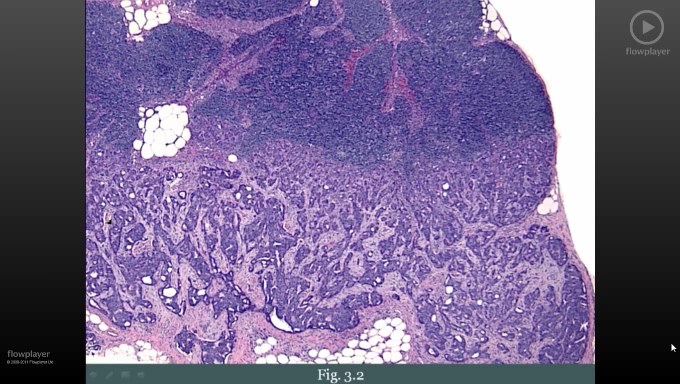TUMOR PROGRESSION
I. TUMOR INVASION AND SPREAD
A. A ccu m u I at io n of mu t a t ion s eve nt ua 11 y resu It s i n t u mor i j was ion a nd sp read.
1. Epithelial tumor cells are normally attached to one another by cellular adhesion
molecules (e.g., E-cadherin).
2. Downregulalion of E-cadherin leads to dissociation of attached ceils.
3. Cells attach to laminin and destroy basement membrane (collagen type IV) via
collagen a se.
4. Cells attach to fibronectin in the extracellular matrix and spread locally,
5. Entrance into vascular or lymphatic spaces allows for metastasis (distant spread).
II. ROUTES OF METASTASIS
A. Lymphatic spread is characteristic of carcinomas,
1. Initial spread is to regional draining lymph nodes (Fig. 3.2).
B. I lematogenous spread is characteristic of sarcomas and some carcinomas.
1. Renal cell carcinoma (often invades renal vein)
2. Hepatocellular carcinoma (often invades hepatic vein)
3. Follicular carcinoma of the thyroid
4. Choriocarcinoma
C. Seeding of body cavities is characteristic of ovarian carcinoma, which often involves
the peritoneum (‘omental caking’, Fig, 3.3).


